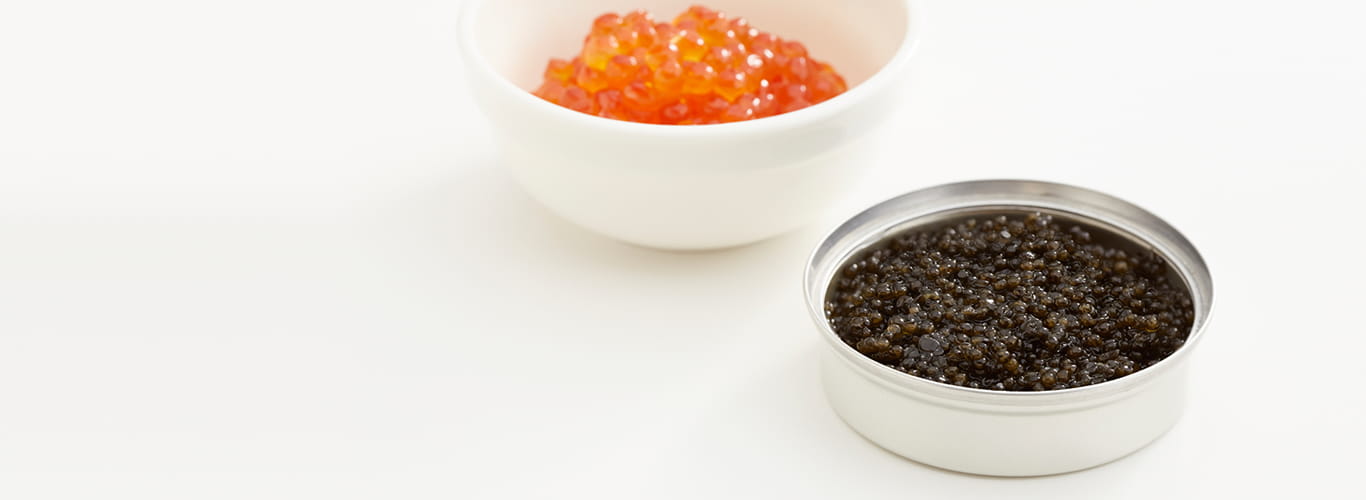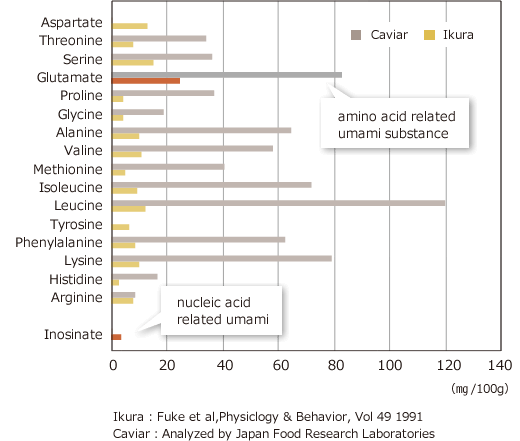Caviar is globally known as one of three world’s most revered delicacies as well as fioe gras and truffles and sometimes compared to black pearl for its scarcity value. It is processed, salted roe of sturgeon.
The main production area of caviar is the Caspian Sea in Russia and Iran. The largest eggs from Beluga sturgeon are called Beluga, the medium sized eggs from Russian sturgeon or Ship sturgeon are called
Oscetra, and the smallest eggs from Stellate sturgeon are called Sevruga. On the other hand, ikura is processed roe of salmon. The salted or soy sauce processed ikura is an essential delicacy in Japanese
cuisine.
Now, let’s look into umami of both fish roes.
The graph shows the amount of free amino acid and inosinate as umami substance, contained in caviar and ikura. There is apparent proportional similarity of amino acid in both roes. However,
caviar as a whole contains more amino acid than ikura. For example, caviar contains five times total free amino acid than ikura. On the other hand, inosinic acid, nucleic acid related umami substance is
only contained in ikura. This leads to the theory that ikura has “synergistic effect of umami”; the estimated umami* of ikura is equivalent to 100mg/100g of glutamate. In conclusion, caviar has rich and
complex flavor while ikura has rich umami.
* Intensity of umami Y=u+1200uv ( Y:Intensity of umami u:concentration of glutamate(%) v:concentration of inosinate(%))




